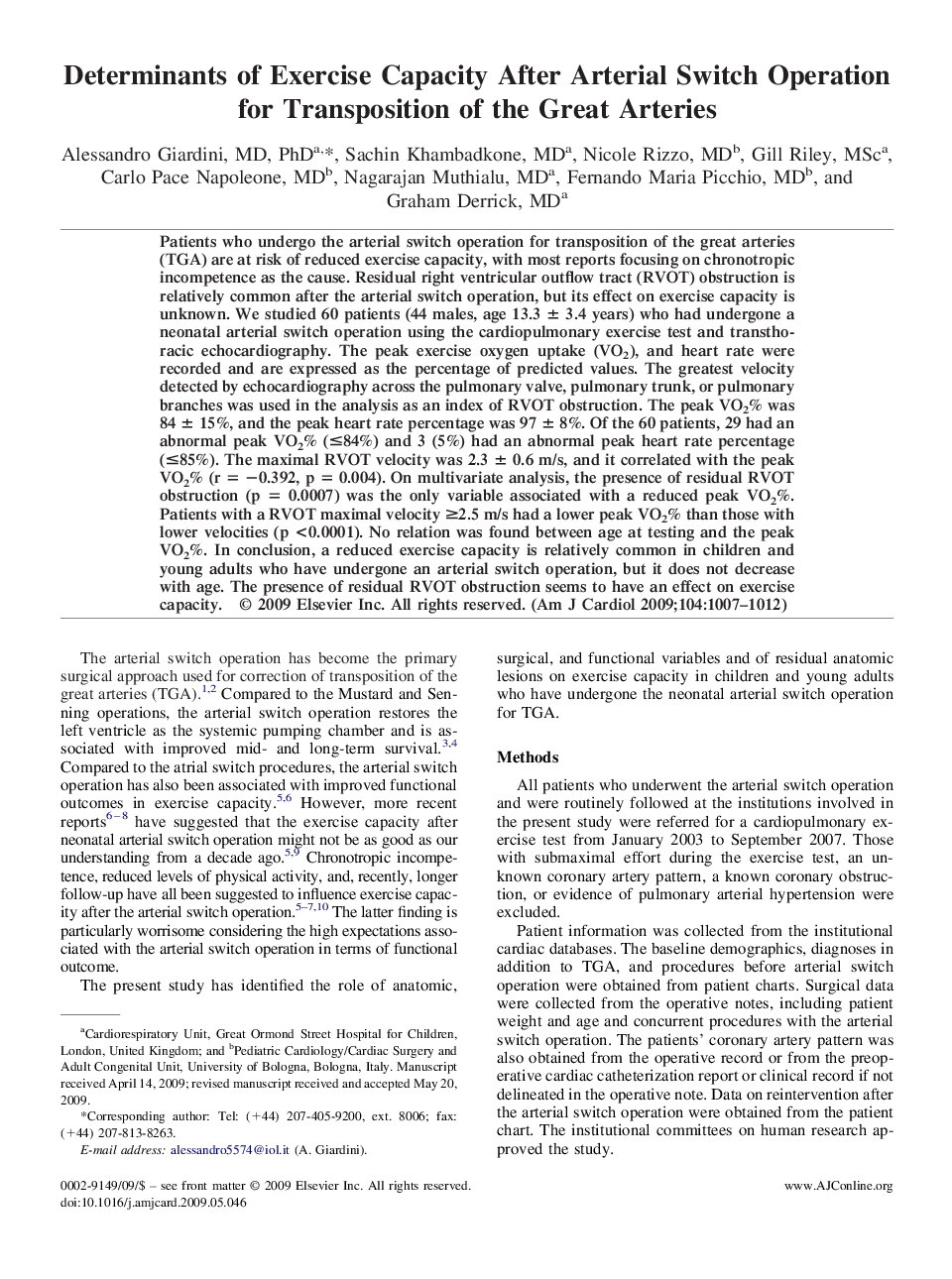| کد مقاله | کد نشریه | سال انتشار | مقاله انگلیسی | نسخه تمام متن |
|---|---|---|---|---|
| 2857513 | 1572290 | 2009 | 6 صفحه PDF | دانلود رایگان |

Patients who undergo the arterial switch operation for transposition of the great arteries (TGA) are at risk of reduced exercise capacity, with most reports focusing on chronotropic incompetence as the cause. Residual right ventricular outflow tract (RVOT) obstruction is relatively common after the arterial switch operation, but its effect on exercise capacity is unknown. We studied 60 patients (44 males, age 13.3 ± 3.4 years) who had undergone a neonatal arterial switch operation using the cardiopulmonary exercise test and transthoracic echocardiography. The peak exercise oxygen uptake (VO2), and heart rate were recorded and are expressed as the percentage of predicted values. The greatest velocity detected by echocardiography across the pulmonary valve, pulmonary trunk, or pulmonary branches was used in the analysis as an index of RVOT obstruction. The peak VO2% was 84 ± 15%, and the peak heart rate percentage was 97 ± 8%. Of the 60 patients, 29 had an abnormal peak VO2% (≤84%) and 3 (5%) had an abnormal peak heart rate percentage (≤85%). The maximal RVOT velocity was 2.3 ± 0.6 m/s, and it correlated with the peak VO2% (r = −0.392, p = 0.004). On multivariate analysis, the presence of residual RVOT obstruction (p = 0.0007) was the only variable associated with a reduced peak VO2%. Patients with a RVOT maximal velocity ≥2.5 m/s had a lower peak VO2% than those with lower velocities (p <0.0001). No relation was found between age at testing and the peak VO2%. In conclusion, a reduced exercise capacity is relatively common in children and young adults who have undergone an arterial switch operation, but it does not decrease with age. The presence of residual RVOT obstruction seems to have an effect on exercise capacity.
Journal: The American Journal of Cardiology - Volume 104, Issue 7, 1 October 2009, Pages 1007–1012